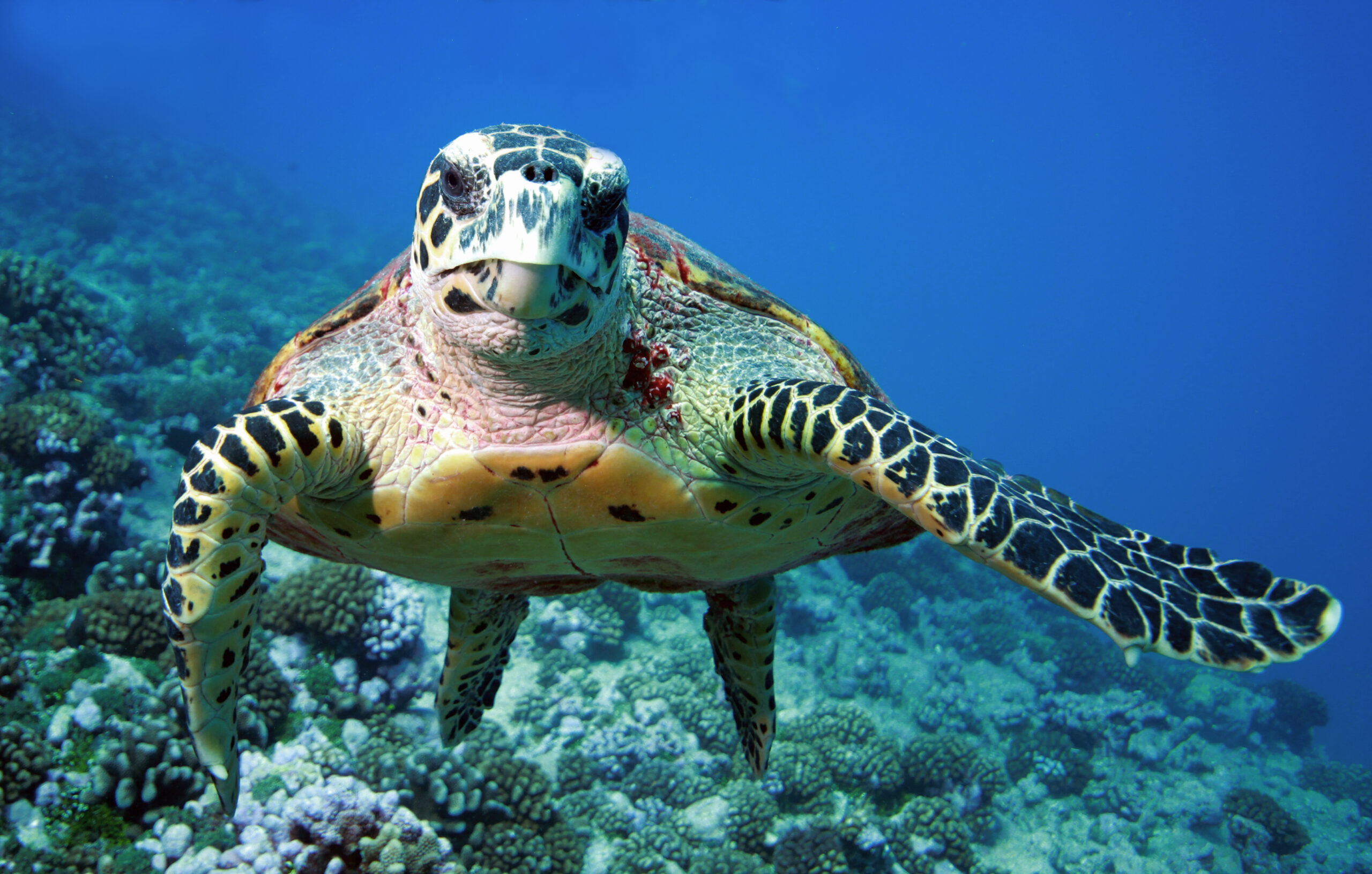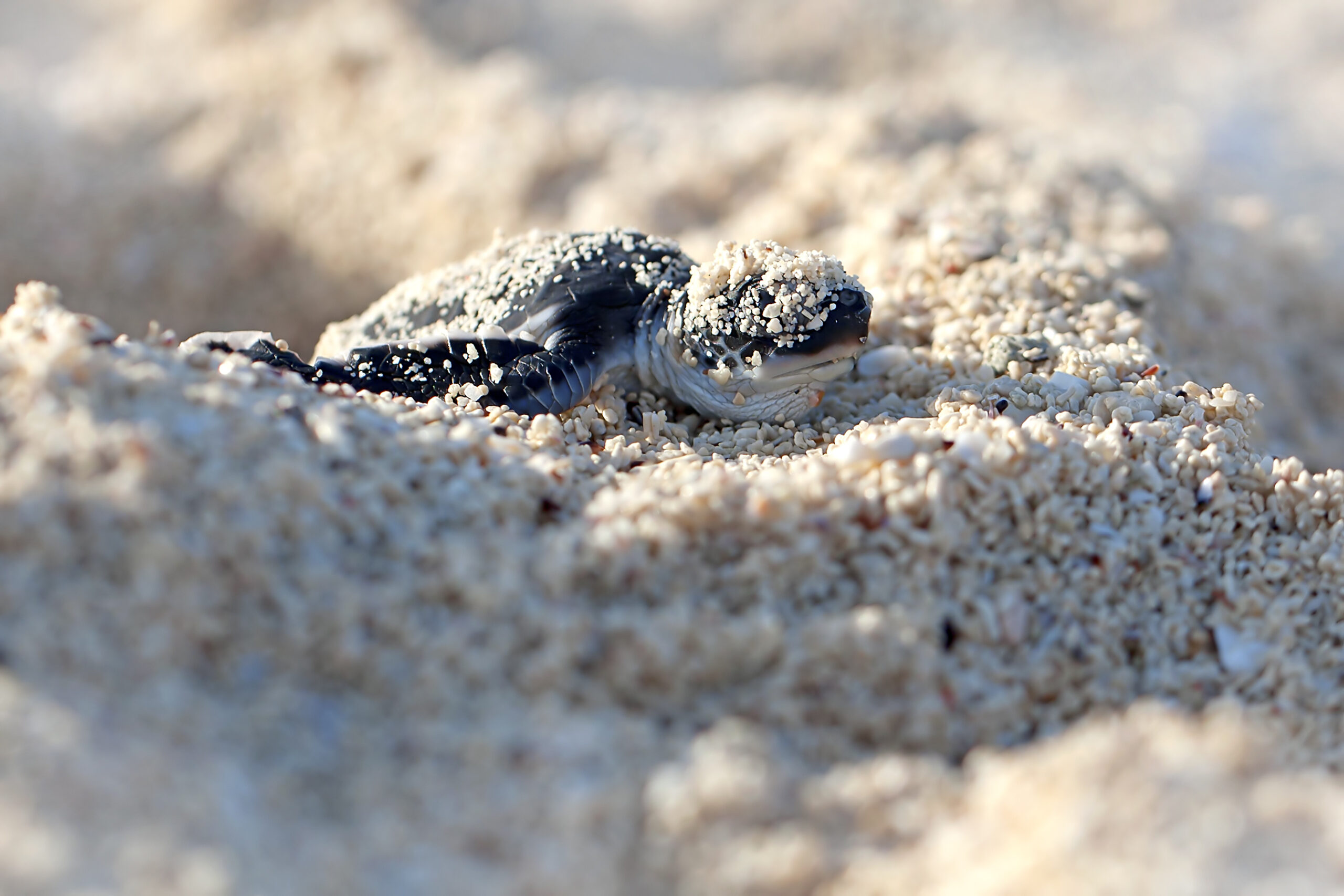Thanda Island Team Taps “Turtle Training” to Relocate Sea Turtle Nest to
Safer Location
Guests join in an effort led by a field officer from Sea Sense to move a nest of 131 green sea turtle eggs to higher ground
The long history of turtle conservation at Thanda Island hit another milestone on July 30th, when guests and staff of the private island off the Indian Ocean coast of Tanzania teamed up for the safe relocation of a sea turtle nest brimming with eggs to the safety of higher ground.
Assisted by Salumu Mapoy, a field officer with Sea Sense, which works with locals to conserve and protect marine wildlife, coastal communities, and Mafia Island Marine Parks, the nest and its 131 white eggs were moved from a low spot on an island beach to one more protected from the water. Two-days old at relocation, their due date is on schedule: September 14.
Turtle Trained Island Staff
The team at Thanda Island is ready and alert whenever sea turtles are in need, having been previously “turtle trained” in essential elements necessary for conservation. Guided by Mapoy, who has been working to protect and preserve turtles for more than 20 years and is part of Sea Sense, the training encompasses “theory sessions” on sea turtle biology and life history, conservation status, monitoring, and threats. There is also practical guidance on field skills, from identifying tracks and excavating hatches to all-important protocols for successful nest relocation.
In late July, the Thanda Island team quickly identified the sea turtle nest, which is relatively easy to spot. Alas, it’s challenging to determine the exact location of the eggs. After spotting tracks that led to the nest, the Thanda Island team blocked off the area and alerted Sea Sense, which sent officers to assist in relocation.

Located 24 nautical miles from the mainland in Mafia Island Marine Park, one of the largest protected areas in the western Indian Ocean, Thanda Island is surrounded by an impressive mosaic of pristine tropical marine habitats from coral reefs to seagrass beds and intertidal flats. Aquatic inhabitants range from delicate seahorses to seasonal whale sharks and include two species of turtle, including two species of threatened sea turtles, that use local island beaches as nesting grounds.

Sea Turtles Hatching in a Nut…er, Turtle Shell
Hatching is just the start for baby sea turtles, of course. Following a long migration, mothers lay eggs on the same beaches on which they were born. The temperature of the nest during incubation determines the gender of hatchlings: Eggs laid in warm sand tend to produce females, while cool sand produces more males.
Eggs hatch after an average of 55 days, and the hatchlings orient towards the brightest direction and use the topography of the surrounding horizon line to find their way to the sea. Upon reaching the water, they use a combination of cues to orient toward deeper offshore areas – and off they go!
Crossing the beach and swimming away is believed to imprint the turtle hatchlings with cues necessary to find their way back when they are ready to breed. Sea turtles take decades to reach sexual maturity. So, here’s looking forward to those that make it back to Thanda Island…one of these days.
